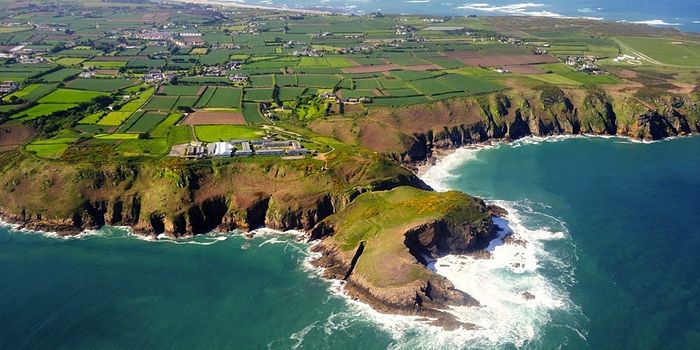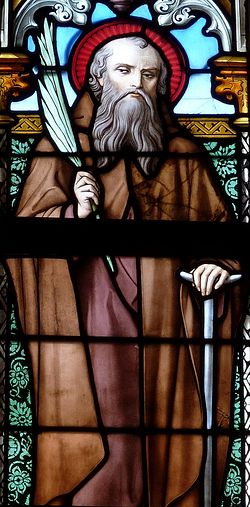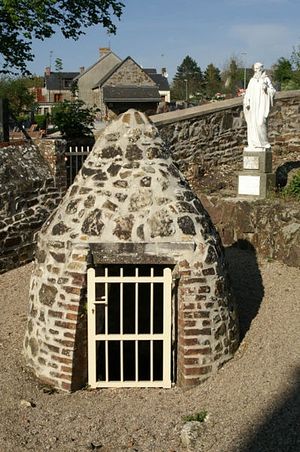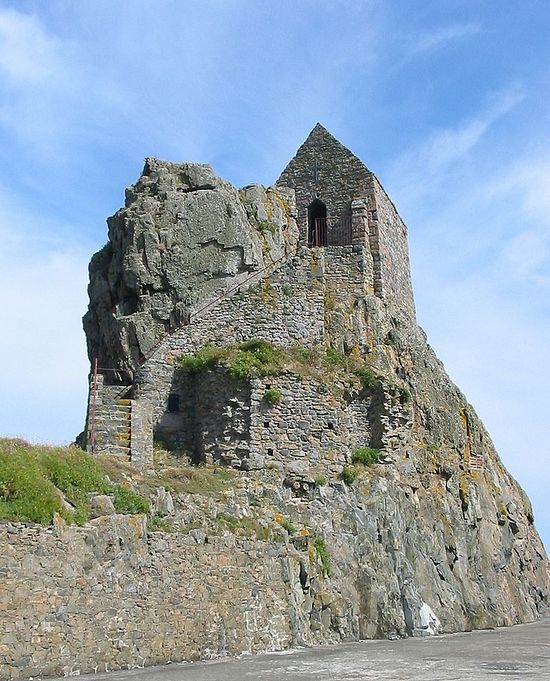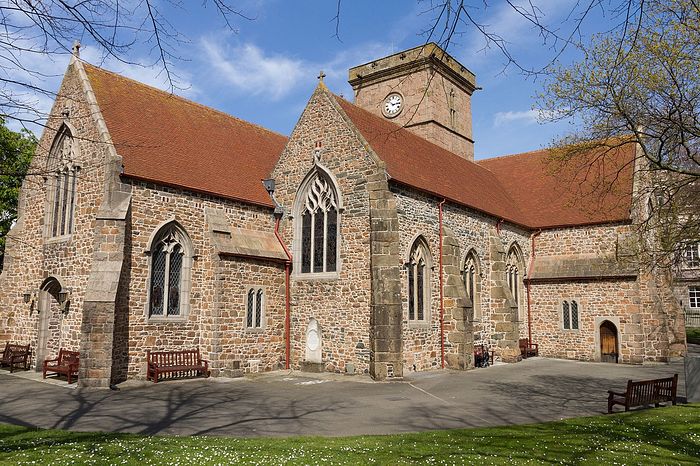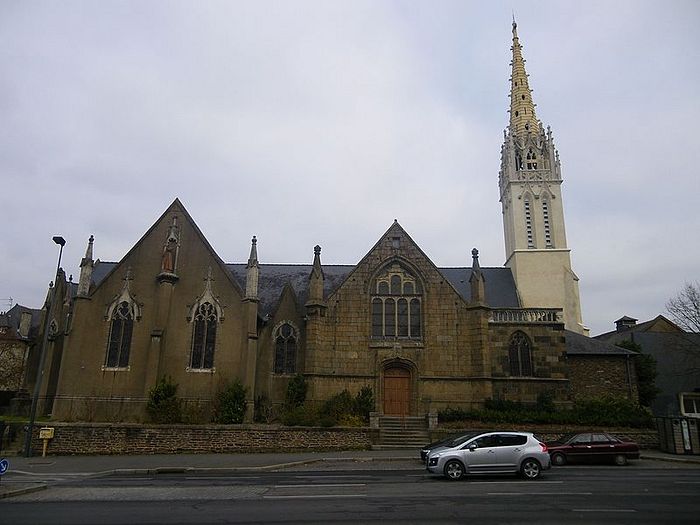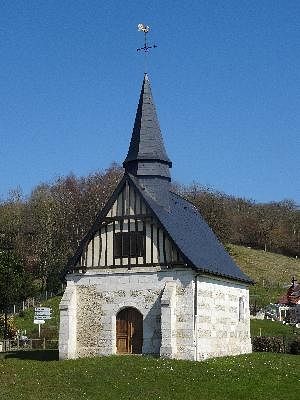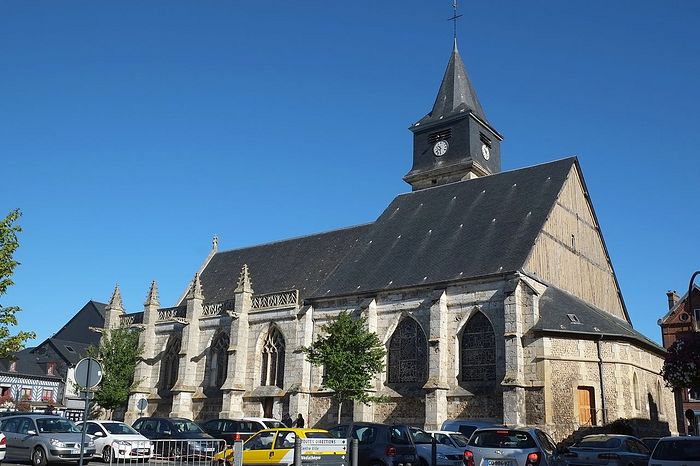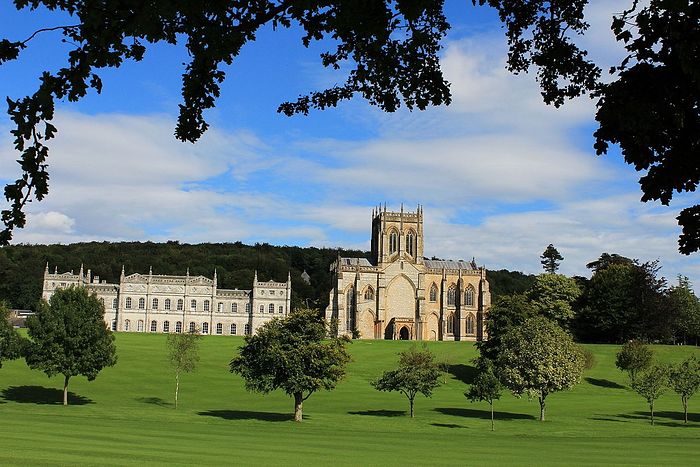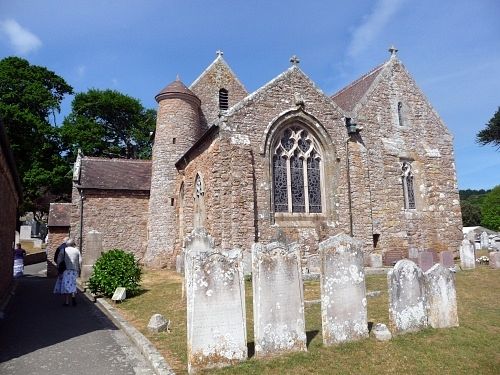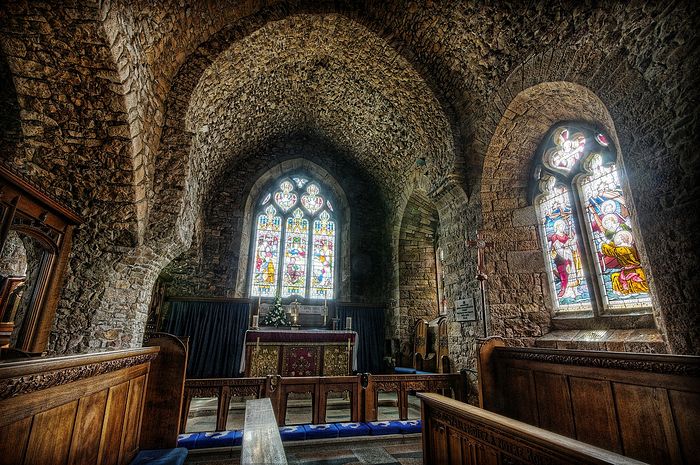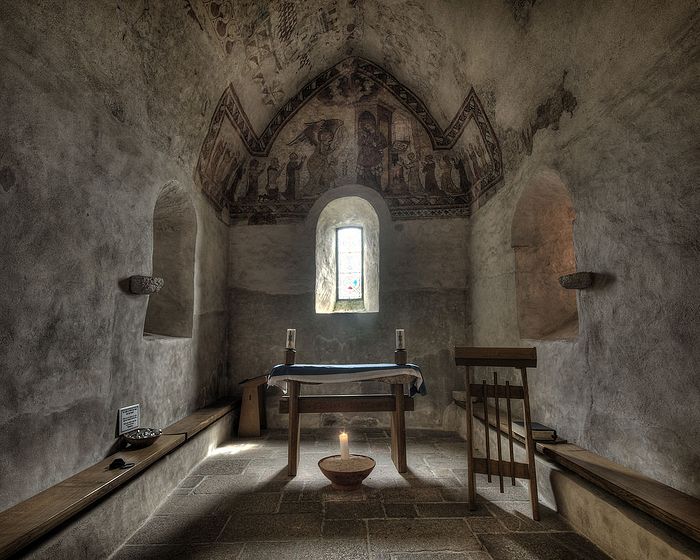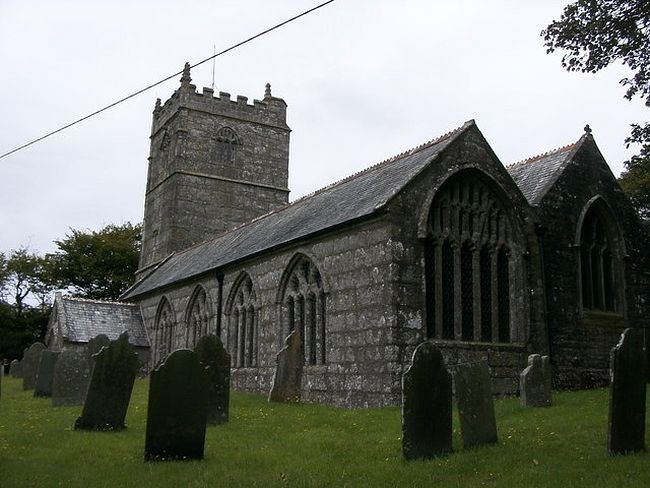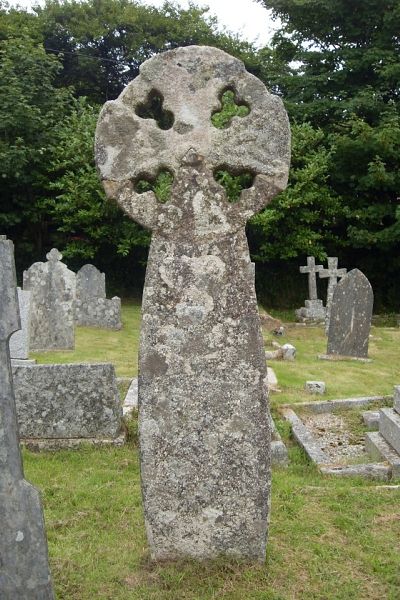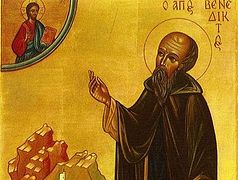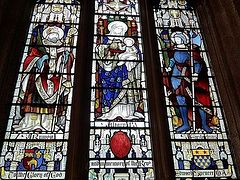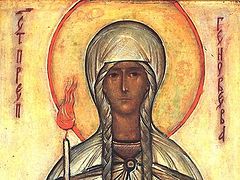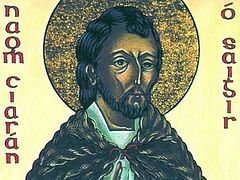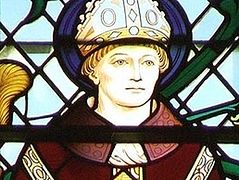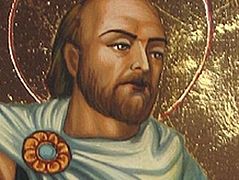The Channel Islands are a group of inhabited and uninhabited islands in the English Channel, off the northwest coast of Normandy in France, consisting of Jersey, Guernsey, Alderney, Brechou (or Brecqhou), Sark, Herm, Jethou, Lihou and several smaller islets (all between them representing the United Kingdom Crown Dependencies of the Bailiwick of Jersey and the Bailiwick of Guernsey, all the while not being a part of Great Britain). These islands were under the influence of so-called Celtic Christianity in “the age of saints”, though there is very scarce information about religious life on them in the first millennium.
Among the early saints that lived on or visited the Channel Islands were Sts. Samson of Dol and his disciple Maglorius, Helier, Branwalader. These lands belonged to the French diocese of Coutances for many centuries. They were mainly inhabited by Celtic Britons, especially after the Anglo-Saxon invasion of England. However, some Norse Vikings startled settling from the ninth century on. For some time the islands belonged to the Duchy of Brittany and from 1066 they belonged to the Duchy of Normandy, which was ruled by the French kings of England, starting from William the Conqueror. Early in the thirteenth century the infamous King John (Lackland) lost the lands of mainland Normandy, but kept the Channel Islands.
Since King Henry III (1216-1272) they have been governed as Crown possessions, but have never been included in the Kingdom of Great Britain. In the following century the French invaded parts of the Channel Islands for a short time, and between 1940 and 1945 they were occupied by the Nazis. After the Reformation, the islands came under the strong influence of French Calvinists and Huguenots and later, partially of Methodists, while retaining some old Catholic traditions. The revival of the veneration of ancient Orthodox saints in these islands started in the nineteenth century and today there is a modest Orthodox presence there, while the dominant religion is the established Church of England. Let us now recall the lives of two saints associated with the Channel Islands: Helier and Branwalader.
***
The Venerable Martyr Helier of Jersey
Commemorated July 16/29
St. Helier (Latinized as Helerius) lived in the sixth century. His Life was composed in the tenth and eleventh centuries. Though modern hagiographers question the authenticity of a number of details from the texts, we still can outline the main events of the saint’s life.
Helier was most probably born in about 510 in Tongeren (the French name: Tongres), the only Roman-founded city in what is now Belgium. His parents were originally pagan. According to tradition, they could not conceive a child for a long time until they turned to a Christian ascetic for advice. He advised them to pray hard to “the true God” with faith, which they did, and their prayers were finally answered—their son named Helier was born.
The future saint was brought up by a devout Christian tutor and with all his heart strove for the ascetic life from a very early age. But the saint’s father, who was of high standing, was not pleased with his son’s lifestyle and did his best to impede Helier. In the end, after the martyrdom of his spiritual father (who, according to one version, was murdered on the instigation of Helier’s father) Helier left his parents’ home and his native land forever. First, the God-loving ascetic wandered much across the various lands of what is now France, devoting most of his time to solitary prayer. It is known that he stayed for some time in Normandy where there is the village of St. Hellier in the Seine-Maritime department on the site of his spiritual labors (the local twelfth century church bears his name). After that Helier may have lived in or near a monastery in Nantes in Brittany, but life in community was not austere enough for him, as Helier sought for ascetic life in total isolation and contemplation.
Soon the saint learned that the inhabitants of the island of Jersey (the largest of the Channel Islands1), who were subject to frequent raids by pirates, had still not been enlightened by the light of the faith of Christ and needed a preacher to convert them. With all his heart Helier wished to enlighten that pagan nation.
Thus, St. Helier retired to Jersey, taking a companion from Nantes with him. In all probability, Helier preached on Jersey, helped the local population, and founded a small monastery on the south side of the island on the site of the present-day town of St. Helier, the island’s principal town. It is certain that the saint for some fifteen years led the extremely austere life of a hermit in unceasing prayer on an islet three quarters of a mile south of Jersey. Helier ate once a day, at times even once a week, and his diet was very frugal; he went barefoot. The holy anchorite would often retreat to a small cave (a hollow) in a rock, situated on this isle, where he would spend much time in prayer and Divine meditation. He would sleep on a tiny “bed”—a protrusion of the rock. Both the cave-hermitage and the “bed” inside it survive to this day.
According to tradition, from his childhood and throughout his life Helier performed numerous miracles. He healed many people from blindness, once saved a man from a poisonous snake, and another time healed a lame person. Helier closely communicated with wild nature, thus, it is known that he spoke with rabbits. The saint would always warn the local residents about dangers every time he saw pirates approaching the island by sea. One day through the prayers of the holy hermit, who made a sign of the cross over the island, the Vikings who had surrounded Jersey in order to seize it swiftly sailed back because of a sudden heavy storm.
Helier received the crown of martyrdom; it happened in 555 or 560. Christ Himself had appeared to him shortly before and told him that Helier would soon meet with Him in eternity. According to one version, he was murdered by a pagan whom he had tried to convert to Christ. According to another tradition, the ascetic was beheaded with an axe by the leader of a band of pagan Saxons (or people from Orkney) who feared that the saint would convert all their chief’s subjects to the Christian faith. And, finally, according to a third version, he was put to death by barbarians.
If we are to believe later accounts, the saint who was martyred on the shore beside his hermitage took his severed head, walked to the Jersey shore with it in his hands and then passed away. We can interpret this spiritually. According to tradition, the saint’s companion saw Helier’s dead body, laid it in a boat and sailed to mainland France. By Divine providence the boat landed at Bréville-sur-mer in what is now the Manche departement of Normandy. A holy spring gushed forth in that place immediately, and a splendid church, now dedicated to the Mother of God (Notre Dame), was built near it. This pure healing spring still exists—its water cures different diseases (especially of the eyes), and a statue of the holy martyr stands close by. Afterwards the relics of the holy martyr and hermit Helier were kept at the monastery of Beaubec-la-Rosière of the Seine-Maritime departement right until the destructive French Revolution.
Helier is still loved and venerated as the saint who brought Christianity to the island of Jersey and was the first to be martyred for Christ on this island. St. Helier is venerated in Brittany and across northwestern France as a wonderworker and healer of many ailments, and it is no coincidence that a number of other French towns and villages bear his name. Jersey’s capital, the town of St. Helier, was named after our saint, who is its heavenly patron. The tiny rock-island where the saint carried out his spiritual labors is commonly known as “the Hermitage Rock”. In 1155 a Roman Catholic monastery in honor of St. Helier appeared on another—the little neighboring tidal islet—near the main island of Jersey, where the former Elizabeth Castle now stands, and it existed until the Reformation. The castle is now used as a museum and it is connected with “the Hermitage Rock” by a breakwater.
The chapel, the hermitage cell and “bed” of St. Helier with their spirit of prayer and antiquity can be visited on the mentioned rocky islet in St. Aubin’s Bay, and can be reached on foot by a causeway at low tide. In fact after the saint’s death a commemorative chapel was erected next to his cave, and the site attracted thousands of pilgrims over many centuries. The feast-day of St. Helier in the town of St. Helier, celebrated on the nearest Sunday to his feast according to the old calendar, is a popular festival, and both civic processions and religious pilgrimages with services, open-air services and wreath-layings at Helier’s cell, are annually held to the Hermitage Rock (among the pilgrims are Orthodox, Catholics, Anglicans and representatives of other denominations). The town of St. Helier has a modern sculpture of its patron-saint. He is considered the protector of the whole island of Jersey.
An Anglican parish church in honor of St. Helier still stands in St. Helier on Jersey. According to tradition, a chapel was built here after his martyrdom, but the first church appeared in the eleventh century. In 1548, King Edward VI ordered all “papal prejudices and idols” to be done away with, thus this beautiful medieval church quickly fell into disrepair: all of its stained glass windows, wall paintings, the baptismal font, the altar screen and other treasures were either demolished or removed. Its altar tables, vessels for holy water and even bells were confiscated; only one bell was left.
It was only in the Victorian era, towards the end of the nineteenth century, that the restoration of this church was initiated and continues to this day. Significantly, in 1945 Elizabeth, the Queen Mother (1900-2002), attended the thanksgiving service at this church to mark the end of the German occupation and presented the rector with a crucifix and candlesticks. It is noteworthy that the town’s coat of arms is two crossed gold axes on a blue background—these symbolize the martyrdom of St. Helier and the sea. The name of this saint is still invoked today, particularly by those suffering from eye and skin diseases.
Among other churches and chapels that bear the name of our saint let us mention those in Rennes (the ancient capital of Brittany), in the towns of Beuzeville in Normandy (which contains his stained glass), Amecourt (Normandy), Barentin (Normandy), Monhoudou (the Sarthe departement in the Pays de la Loire region) and other places. Another holy well of St. Helier with curative properties can be found at Saint-Jouan des Guérets (in the Ille-et-Vilaine departement, Brittany). The saint is also venerated (in church and chapel dedications and in stained glass) in the Cotentin Peninsula in Normandy that he visited, and other areas of France. The memory of St. Helier is alive in his motherland in Belgium, for example in the medieval basilica of the Mother of God in Tongeren.
Holy Hierarch Branwalader of Jersey
Commemorated January 19/February 1
 A stained glass image of St. Branwalader
A stained glass image of St. Branwalader What is known for certain is that in the early tenth century King Athelstan of England (924-939), who much encouraged monasteries and collected relics of local saints from earlier times, founded the monastery at Milton in the county of Dorset (now the village of Milton Abbas). It was he who arranged the translation of a portion of St. Branwalader’s relics (either his skull or a hand, according to two different records) to Milton monastery in 935. The monastery church of Milton was then dedicated to the Most Holy Mother of God, St. Samson and St. Branwalader. The former abbey church—presently the largest medieval church in central Dorset—preserves this dedication to this day: The current structure dates from the fourteenth century, and it is now used as a parish church.
From the tenth century on, veneration for this saint grew. On Jersey a large parish was subsequently named after him—St. Brelade—the name that it retains to this day. A church dedicated to our saint stands there; it apparently occupies the site of the original church built by Branwalader himself. The church is located on the south-western side of the island and is one of the twelve surviving ancient parishes of Jersey. The first written record of this church dates back to 1035—at that time it was a monastery church and it had been built much earlier. Since the twelfth century, St. Branwalader’s Church has been used as a parish church. Its main treasures are stained glass windows along with a thirteenth-century cross inside the Lady Chapel, discovered under the church floor many years after the Reformation.
Just outside this church is a very ancient little chapel, commonly known as the “Fishermen’s Chapel”, in which very early medieval frescoes have been preserved in spite of the Reformation. The chapel walls are presumably of the sixth century. The chapel’s stained glass windows mistakenly depict scenes from the life of St. Brendan the Navigator—those who commissioned the windows confused St. Branwalader with St. Brendan. Most of the frescoes were accidentally revealed about 100 years ago. Among the scenes are “The Resurrection”, “The Annunciation”, “The Assumption”, “The Last Judgment”, “Adam and Eve”, “Adoration of the Magi”, “Christ Being Scourged”, “Christ Riding the Donkey”, “The Roman Soldier” etc. One of the local bays—St. Brelades Bay—is also named after our saint.
The Cornish village of St. Breward in England bears the name of Branwalader as well. It sits on the west side of Bodmin Moor—a granite upland rising up to 1,375 feet. According to tradition, the saint lived here as a hermit, preached, and may have built a chapel. A church dedicated to St. Branwalader stands in this village to this day. The present structure was consecrated in 1278, though there was an earlier church in the same place. St. Breward church is the highest in Cornwall at about 700 feet above sea level. The local parish celebrates its patronal feast on the first Sunday before February 22 (a local feast of St. Branwalader). Apart from the church, this unique village, which is popular among tourists despite its remoteness, boasts early Celtic crosses and, in the valley outside, the ancient holy well of St. Branwalader, the waters of which used to heal conjunctivitis and related ills.
The chronicler William of Worcester (c. 1415– c. 1482) reported that St. Branwalader’s relics (perhaps just a portion of the relics) at his time were kept at the church of Branston2 in Devon, while the well-known antiquarian John Leland (c. 1503-1552) mentioned a chapel in honor of our saint near Seaton in Devon. Despite the scarcity of specific information associated with him, this saint was nevertheless much venerated in Brittany (France), on Jersey, in Cornwall, Milton (England), and also, liturgically, in the English cities of Exeter and Winchester. A few places in Brittany, like Locbrevalaire, may have derived their names from Branwalader.
We hope and pray that the veneration of these two early saints of the Channel Islands, which many centuries ago expressed the Orthodox traditions of Celtic Wales and Cornwall and mainland Gaul alike, will revive among Orthodox believers and that the Orthodox faith will be restored in this unique small region between England and France.
Holy Fathers Helier and Branwalader, pray to God for us!

